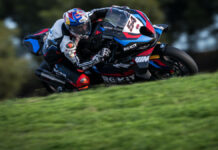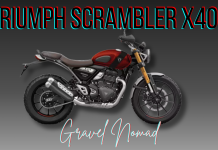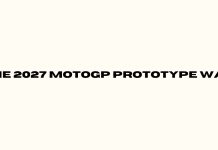Alpine, the sportscar brand of Renault, is developing its platform called Alpine Performance Platform (APP) for its future all-electric models. The company plans to release seven electric models by 2030, although not all will be based on the APP.
The first model to be released is the A290, based on the new Renault 5 and Renault 4. It is expected to be based on the Alliance CMF-BEV platform. In 2025, Alpine will launch an electric crossover called the GT, likely based on the Alliance CMF-EV platform, similar to the Renault Mégane E-Tech Electric and Nissan Ariya.

APP Platform
The first model based on the new APP platform is scheduled to launch at the end of 2026. It will be an electric sportscar, the successor to the current A110. Additionally, Alpine plans to introduce a roadster based on the A110 and a new four-seater sports coupé called the A310, all based on the APP platform.
Alpine has also announced two new models in the D and E segments, but further details have not been provided. Whether these models will use the new APP platform or the existing Alliance platforms is unclear. Alpine has mentioned developing its technologies for its exclusive sports models, including a hydrogen combustion engine and Alpine Dynamic Module (ADM), a central control system to enhance agility and performance.
Revenues
Regarding business goals, Alpine aims to increase its revenues by launching the first electric models in 2024, targeting break-even and a turnover of two billion euros by 2026. The company aims for 40% annual sales growth to achieve this goal. By 2030, Alpine aims to reach sales of eight billion euros, assuming expansion into China contributes one billion euros in sales.
Electric
Alpine plans to expand its market share in Europe and Japan with its comprehensive range of sports cars. The company also aims to grow internationally, particularly in the USA and Asia, where its new models will be available starting in 2027. The goal is to transform Alpine from a niche brand into a fully-fledged global brand. Alpine aims for an operating margin of over 10% by 2030 and aims to establish a strong and sustainable business model.
Luca de Meo, Renault Group CEO, emphasizes that Alpine is a brand focused on motorsport and state-of-the-art technology, and its recent developments have transformed it into a fully-fledged car manufacturer. The entry of Alpine into Formula 1 also adds prestige and recognition to the brand.
Pros of Alpine’s Development and Strategy:
- Focus on Electric Vehicles: Alpine’s commitment to developing electric models aligns with the growing demand for electric vehicles worldwide. By introducing a range of electric sports cars, Alpine can cater to environmentally conscious consumers and capitalize on the expanding market for electric vehicles.
- Dedicated Platform: The development of the Alpine Performance Platform (APP) allows Alpine to have more control over the design and engineering of its vehicles. Alpine can optimize performance, handling, and driving dynamics to enhance the overall driving experience by creating a platform specifically tailored for their sportscar models.
- Brand Expansion: Alpine’s goal of transforming from a niche brand to a global brand signifies their ambition to broaden its customer base and increase its market presence. By targeting international markets, particularly the USA and Asia, Alpine can tap into new customer segments and potentially boost sales.
- Technological Advancements: Alpine’s focus on state-of-the-art technology, such as their Software-Defined Vehicle (SDV) expertise and the Alpine Dynamic Module (ADM), demonstrates their commitment to innovation and enhancing the performance of their vehicles. These technological advancements can differentiate Alpine’s offerings from competitors and attract tech-savvy consumers.
Cons of Alpine’s Development and Strategy:
- Platform Flexibility: While Alpine’s APP platform offers the advantage of customization in length and width, it remains to be seen whether it can effectively accommodate the diverse needs of different vehicle types, such as two-seater sports cars and larger sedans or SUVs. Ensuring that the platform can meet the specific requirements of various vehicle segments may pose a challenge.
- Uncertain Model Details: The lack of specific details about some upcoming models, particularly those in the D and E segments, leaves room for uncertainty. Without concrete information on the models’ specifications, features, and whether they will be electric, it becomes difficult to assess their potential market success and alignment with customer preferences.
- Market Competition: Alpine faces intense competition from established players and emerging brands in the electric sports car segment. Alpine needs to differentiate itself through superior performance, unique design, and compelling features to succeed in the highly competitive market. Carving out a significant market share will require careful positioning and marketing.
- Market Expansion Challenges: Expanding into international markets, such as China, can present challenges related to regulatory requirements, cultural differences, and establishing a strong distribution and service network. Entering new markets requires a deep understanding of local dynamics, customer preferences, and effective marketing and distribution strategies.
Conclusion
Alpine’s development and strategy reflect a forward-thinking approach to the automotive industry’s evolving landscape. By embracing electric vehicles, creating a dedicated platform, and aiming for international expansion, Alpine aims to position itself as a prominent player in the sportscar market. The company’s commitment to innovation, technological advancements, and performance enhancement demonstrates a focus on delivering high-quality vehicles to meet the demands of enthusiasts.
Challenges
However, Alpine faces challenges regarding platform flexibility and the need to define its upcoming models’ specifications and market positioning clearly. Competition in the electric sports car segment is intense, requiring Alpine to differentiate itself effectively to capture a significant market share. Additionally, expanding into new markets poses its own set of challenges that need to be carefully navigated.
Alpine’s development and strategy hold promise for the brand’s growth and transformation. Success will depend on their ability to deliver on their promises, adapt to market dynamics, and effectively position themselves as a global brand. With the right execution and a continued focus on excellence and innovation, Alpine has the potential to establish a strong foothold in the industry and achieve its business goals.


































